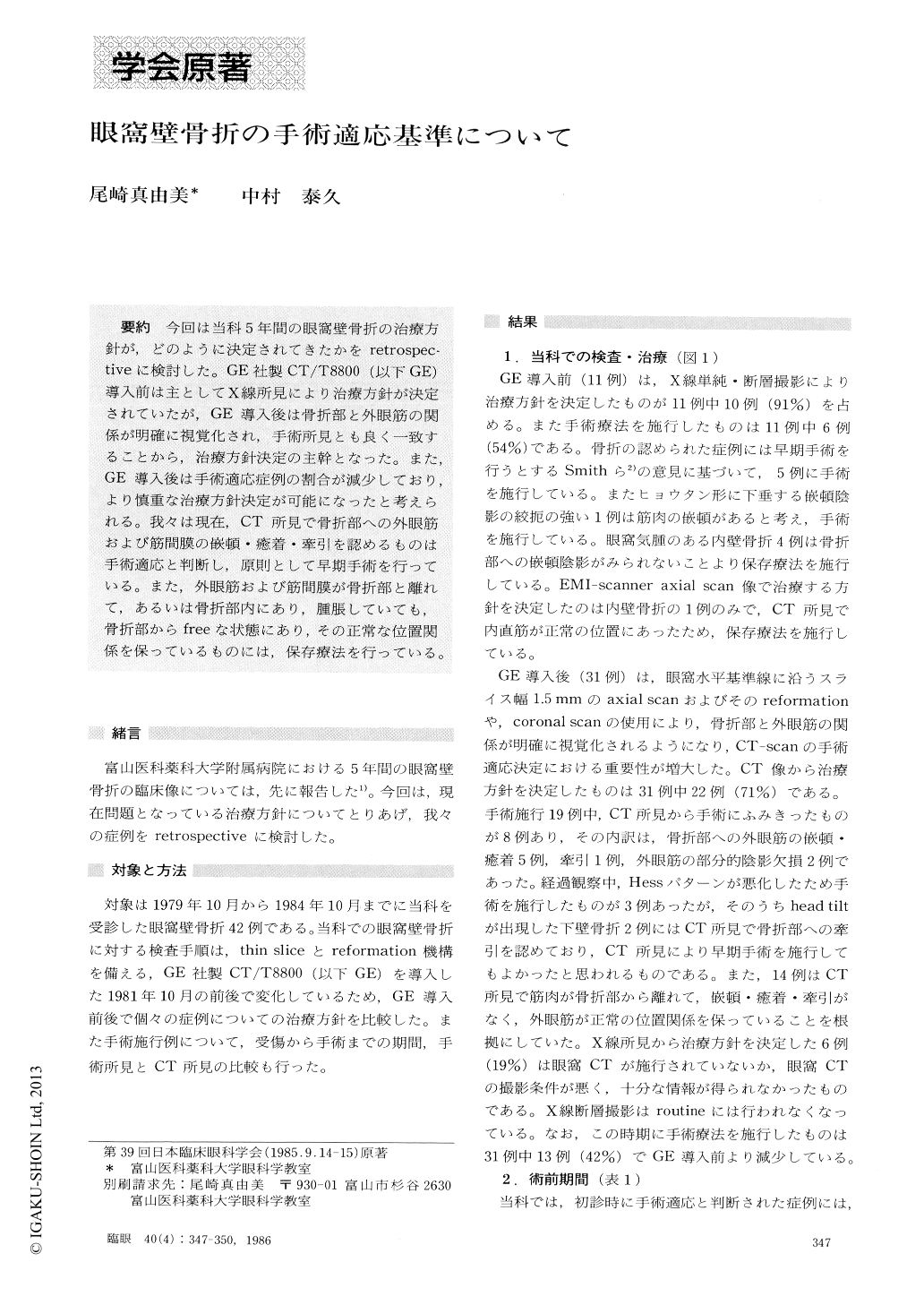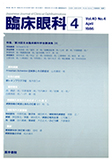Japanese
English
- 有料閲覧
- Abstract 文献概要
- 1ページ目 Look Inside
今回は当科5年間の眼窩壁骨折の治療方針が,どのように決定されてきたかをretrospec-tiveに検討した.GE社製CT/T8800(以下GE)導入前は主としてX線所見により治療方針が決定されていたが,GE導入後は骨折部と外眼筋の関係が明確に視覚化され,手術所見とも良く一致することから,治療方針決定の主幹となった.また,GE導入後は手術適応症例の割合が減少しており,より慎重な治療方針決定が可能になったと考えられる.我々は現在,CT所見で骨折部への外眼筋および筋間膜の嵌頓・癒着・牽引を認めるものは手術適応と判断し,原則として早期手術を行っている.また,外眼筋および筋間膜が骨折部と離れて,あるいは骨折部内にあり,腫脹していても,骨折部からfreeな状態にあり,その正常な位置関係を保っているものには,保存療法を行っている.
We evaluated, retrospectively, a consecutive series of 42 cases with orbital wall fracture during the foregoing 5-year period. We paid particular attention to the criteria for surgical repair of the fracture. The surgery was a success in all the treated 30 cases except one, in whom surgery was performed 17 years after orbital trauma.
Our criteria for surgical treatment differed beforeand after introduction of computed tomography (GE CT/8800). During the first 2 years, 6 out of 11 cases (54%) were treated by surgery on the basis of clinical signs and conventional x-ray findings. During the latter 3 years, 22 out of 31 cases (71%) wer surgically treated on the additional basis of CT findings. The CT findings indicating surgery include the pres-ence of herniation, adhesion and traction of extraocular muscle and intermuscular membrane to the fractured site. The findings observed by CT coincided well with those confirmed during surgery.

Copyright © 1986, Igaku-Shoin Ltd. All rights reserved.


